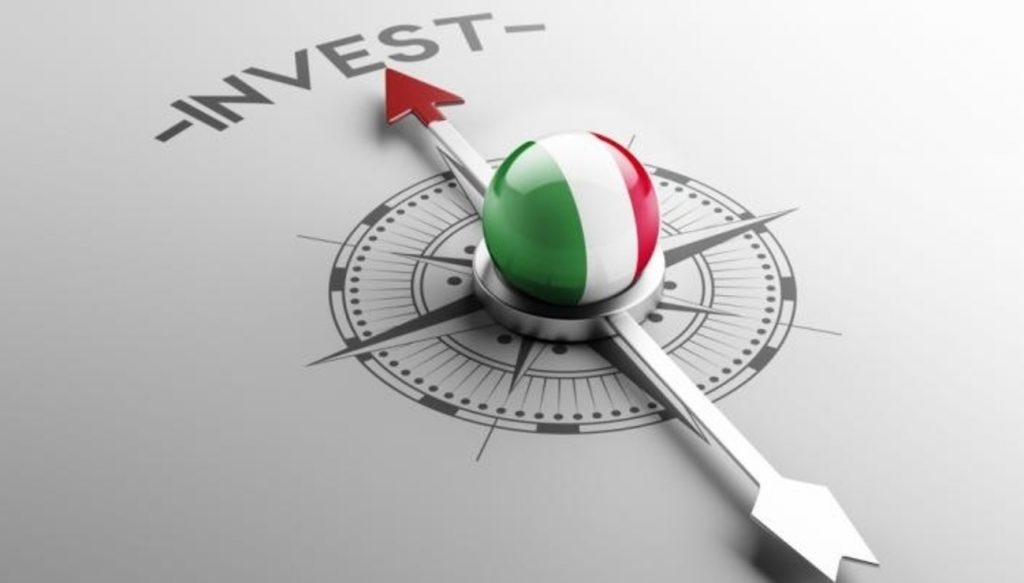Let’s see together ten big reasons to invest in Italy. But before all these, the main reason is the possibility of being able to rely on competent and professional support from the Canadian Chamber in Italy. Don’t hesitate to contact us to introduce us to your reality, your ambitions and to know our strategic and operative actions for your commercial landing in Italy.
1. One of the world’s top economies and markets
Italy is the 3rd largest economy in the Eurozone and the 8th largest in the world, with a GDP of about 2 trillion dollars (IMF, 2016). Its domestic market offers several business opportunities, with a population of more than 60 million and a GDP per capita of more than 30,000 dollars. The net wealth of Italian households is 8 times their disposable income (a higher ratio than US, Germany and Canada) and their indebtedness remains relatively low – on average, 82% of disposable income (Bank of Italy, 2013).
2. A strategic logistic hub connecting global markets
Italy is a key gateway to the European Single Market and its 500 million consumers, but is also close to Northern Africa and the Middle East and their further 270 million potential customers; at the same time, it represents an ideal bridge between Southern Europe and Central and Eastern EU countries. Its transportation network includes 6,800 km of motorways (AISCAT, 2014), and over 1,000 km of high-speed railways with top speeds of over 300 km/h (190 mph), as well as ports in strategic locations for maritime freight and transshipment.
3. A key global player in manufacturing and export
For over 30 years Italy has been the 2nd largest manufacturing economy in Europe, surpassed only by Germany, and is the 6th-7th top manufacturer in the world (World Bank, 2015). Italy has a large manufacturing trade surplus, ranking among the global leaders for 935 products out of 5,117 marketed goods: 1st for 235 products, 2nd for 377 products and 3rd for 323 products (Fondazione Edison, 2012).
4. A highly-competitive machinery sector and a strong “made in Italy” brand
To invest in Italy means having access to its unique export know-how in sectors such as machinery and automation, fashion, design, and food. Companies investing in Italy can also rely on extensive networks of SMEs and industrial clusters able to supply intermediate high quality products along global value chains. Moreover, the evolving needs of the BRICS countries’ booming middle class – which is expected to soon exceed 800 million people (Goldman Sachs, 2010) – will result in a strong increase in demand for high-end ‘Made in Italy’ products in the coming years.
5. Excellent in R&D and innovation
Research and innovation are widely integrated into industrial processes, with renowned excellences in different fields of life sciences (i.e. neurosciences), physics and engineering (e.g. robotics), social sciences, and humanities (e.g. hi-tech archaeology). Italian researchers, whose performance in publishing high-quality and widely-quoted papers is recognized as one of the best in global academia, lead and actively contribute to several European R&D networks – such as the CERN physics laboratory – and top level transnational research centres.
6. A skilled and competitive workforce
The quality of Italian higher education is excellent: more than 20 different universities rank in the top 500 academic institutions in the world (Academic Ranking of World Universities, 2016), and over 300,000 students graduate every year (Italian Ministry of Education, 2014). Nonetheless, Italian hourly labour costs are below the Eurozone average: they are 18% lower than in France and 10% than in Germany (Eurostat, 2015).
7. Un unparalleled cultural offer and country brand
Any Italian city is gifted with traces of a cultural heritage formed over 2,500 years. All of this, combined with its world-famous art, music, and food culture, gives Italy an unparalleled quality of life. Italy is ranked 1st at a global level for UNESCO World Heritage sites (53 as of 2017), and it is one of the world’s top tourism destinations, with over 50 million visitors each year (UNWTO, 2014). Measures on “country branding” rank Italy in the top position when it comes to ‘experience’ (Country Brand Index, 2014): accordingly, goods and services with a strong ‘Made in Italy’ character are primarily appreciated for their quality and uniqueness.
8. A strong set of policies and incentives to improve competitiveness
Robust tax credit schemes help companies improve their competitiveness: a 50% tax credit for private investments in R&D (including highly qualified personnel), a 40% deduction for investment in capital goods, which is raised to 150% for investments in digitalization and Industry 4.0 solutions. As a result of 2016’s “Industria 4.0” national plan, Italy has now the 2nd most attractive fiscal environment among developed countries for digital investments (Digital Tax Index, 2017).
9. A reform-minded administration, pro-business and pro-growth
A comprehensive reform strategy is in place to build a more friendly business climate, simplifying and adapting regulations, improving education and justice. Besides the already mentioned “Industria 4.0” plan, and a comprehensive policy strategy for hi-tech innovative startups, in the last few years the labour code has been overhauled, more flexibility to conclude tax agreements has been introduced, the exploitation of oil and gas resources has been eased, new financial tools for real estate are being made available, and dedicated business courts for foreign investors have been set up.
10. A country open to foreign investment
Today, multinational companies represent an important part of the Italian economy: industrial foreign affiliates now employ 11% of total workers, produce more than 20% of domestic turnover, and export 26% of national exported goods (ISTAT, 2014). According to the FDI Confidence Index, Italy ranks 13th overall in 2017, outstripping countries such as the Netherlands, Sweden and Ireland (A.T. Kearney, 2017).






